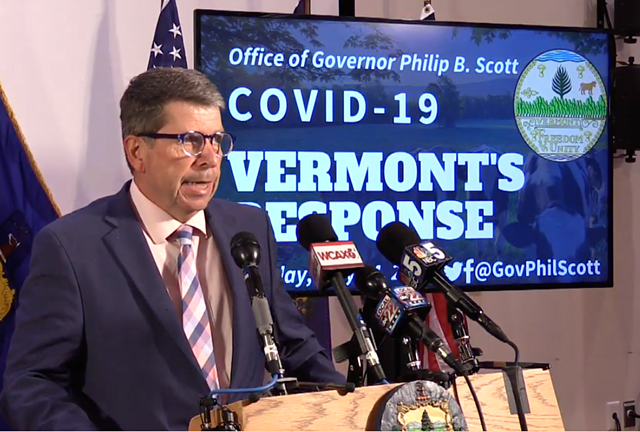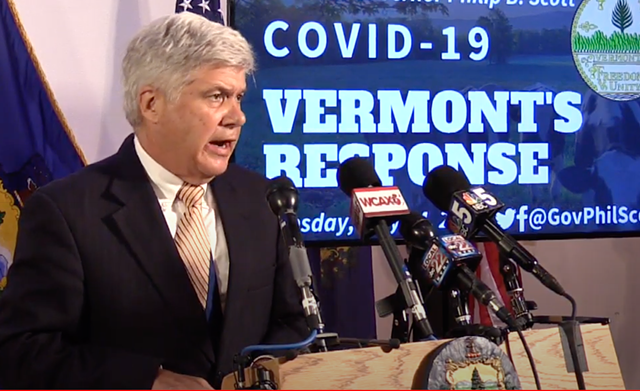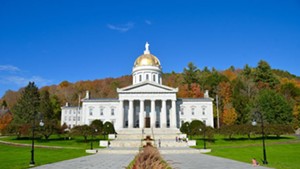Vermont officials announced on Tuesday the availability of more than $300 million in grants to support struggling health care and agricultural businesses during the COVID-19 pandemic.
The new programs — $275 million for the health care industry and $25 million for dairy farms, processors and cheesemakers — represent the latest effort by Gov. Phil Scott's administration to distribute federal coronavirus relief funds to local businesses on the brink.
“These dollars are needed because the virus has wiped out many important markets for dairy farmers, cheese makers and valued-added business,” Agriculture Secretary Anson Tebbetts said at a press conference on Tuesday.
In the last four months, the state has lost 25 dairies, quadrupling what had already been an alarming failure rate of dairies before the pandemic. To date, there are just 636 cow dairies in Vermont, down about 40 percent from figures a decade ago.
“It speaks to the need out there to get these dollars back to the farmers so they can pay their bills,” Tebbetts said.
To qualify for the funds, businesses will have to show losses since March 1 due to the pandemic, whether from lower sales or higher expenses, such as on cleaning supplies or personal protective gear.
The majority of the funds, $21.2 million, will go to cow, goat and sheep dairies, while $3.8 will go to processors, including yogurt and ice cream makers. The application period opens on Friday at noon and runs through October 1.
Tebbetts said his agency is also preparing a $5 million program for nondairy agricultural operations, such as fairs and farmers markets.
Mike Smith, secretary of the Agency of Human Services, outlined the $275 million in relief available for the health care sector. He stressed that the state has already provided $58 million in such aid but that an estimated $375 million more is needed to stabilize hospitals, private practices and other health care providers.
“Across the board, provider[s] indicated that, without further financial assistance, practices and organizations in Vermont would be forced to close,” Smith said.
Unlike the first-come, first-served nature of other business relief programs, Smith said applications would be accepted between July 17 and August 15, and no decisions about awards would be made until after the close of the deadline.
“We want to make sure that everyone has a chance to apply for these grants,” he said.
The vast differences between health care organizations — from the University of Vermont Medical Center to small town doctors — made the model a fairer way to administer the program, Smith said.
A second round of grants in October will cover losses that doctors, dentists and long-term care facilities have experienced from June 16 through September 30, he said.
Priority will be given to the “impact of an applicant’s sustainability,” but it’s not clear exactly how that will be determined.
“The financial stability of the health care system influences Vermont’s economy, so these grants will help Vermont’s economy overall,” Smith said.

















Comments
Comments are closed.
From 2014-2020, Seven Days allowed readers to comment on all stories posted on our website. While we've appreciated the suggestions and insights, right now Seven Days is prioritizing our core mission — producing high-quality, responsible local journalism — over moderating online debates between readers.
To criticize, correct or praise our reporting, please send us a letter to the editor or send us a tip. We’ll check it out and report the results.
Online comments may return when we have better tech tools for managing them. Thanks for reading.